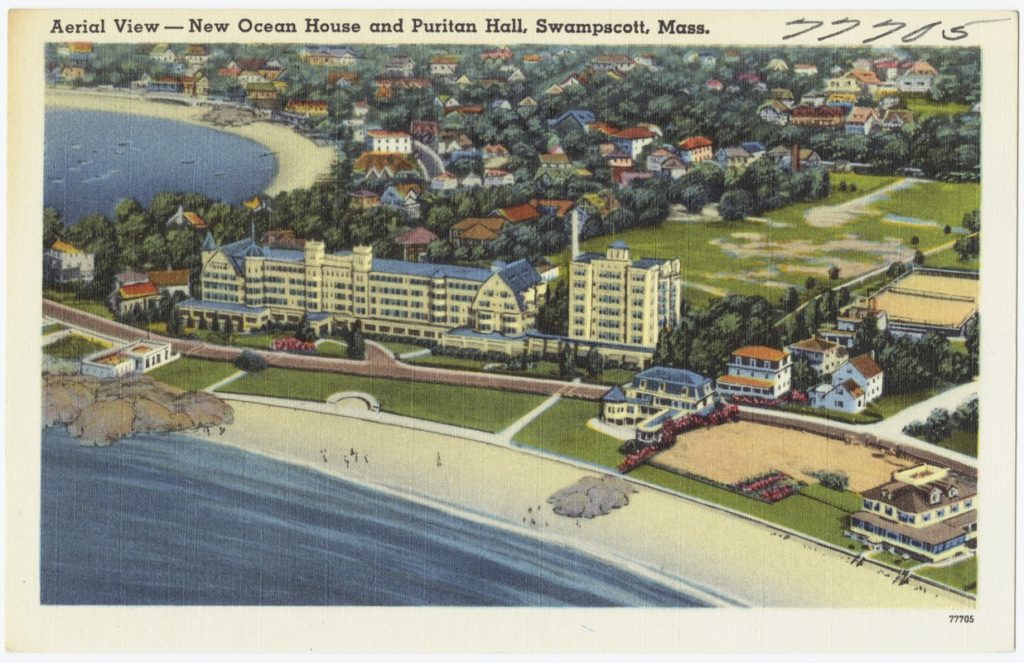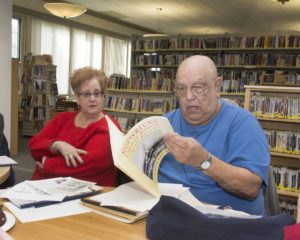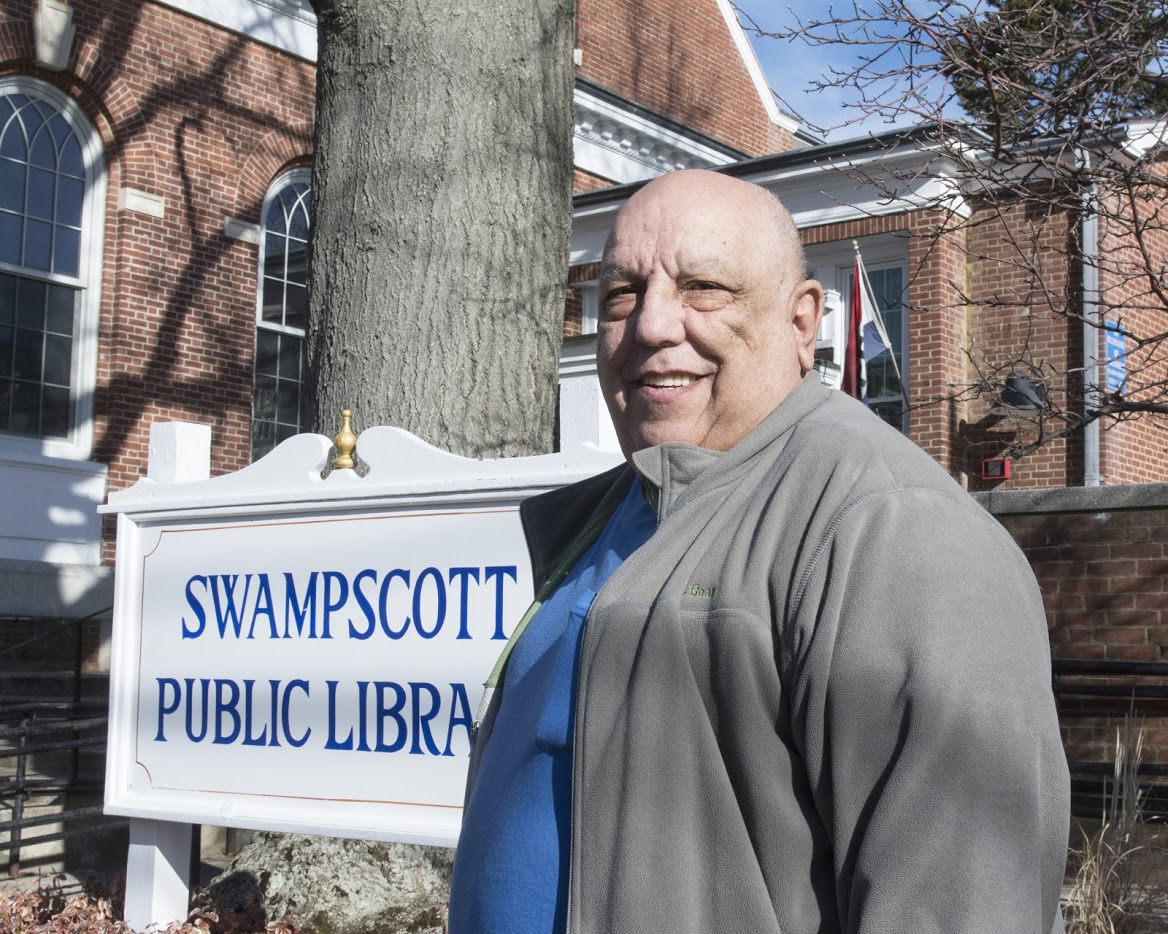Lou Gallo, the town’s unofficial historian, meets with other history buffs on the first Friday of every month at the Swampscott Library.
Unofficial historian shares stories of Swampscott’s past
By SANDI GOLDFARB
Although he now lives in Saugus, Louie Gallo’s heart remains in Swampscott.
“When I moved to Saugus in 1995, I had mailing labels printed with my new street address and Swampscott as my town,” he said.
Gallo was raised at 44 Orient Court and later lived on Sculpin Way. After working as a commercial artist for 15 years, first at Copanes Color Print, then at Consolidated Graphics, and later at Webster Industries, Gallo accepted a job with Swampscott Public Schools in 1973. He joined the Swampscott Public Library staff seven years later. “I liked working around kids; they keep you young,” he said.
For more than six years, Gallo oversaw facilities at the library, which was built on land donated in 1917 by Elihu Thomson, an inventor and engineer who in 1892 merged his firm, The Thomson-Houston Electrical Company, with Edison General Electric Company, now GE. In order to stock the library shelves, “books were moved from Thomson’s house bucket-brigade style, to the new library,” said Gallo.

As Swampscott’s unofficial historian, Gallo welcomes the chance to share stories of the town’s glorious and sometimes quirky past. He relished the chance to talk about the day when the FBI arrived unexpectedly at the library. “It was 8:00 in morning. Two men were banging on the door, flashing their badges.” The agents explained that they wanted to inspect an old typewriter that was kept on a table at the bottom of the library’s staircase. “One of the agents sat down, typed a few words and said, ‘This is the one!’” Gallo later learned that the typewriter had been used to produce threatening letters that were mailed to then President Jimmy Carter. “We never got that typewriter back, by the way,” he said.
When asked about another commander-in-chief’s connection to Swampscott, Gallo noted Calvin Coolidge spent a summer at White Court, a private estate located on the ocean-front property that later became Marion Court College. With great delight, Gallo explained how in the winter of 1925, $50,000 worth of stolen alcohol, which had been confiscated and stored at the police station, mysteriously disappeared.
“The police chief lost his job and Coolidge never came back,” Gallo said. Always eager to connect the dots, Gallo added that following the scandal, “a new police chief, Chief Reeves, took over. He married Elihu Thomson’s widow, Clarissa Hovey Thomson, and the couple lived in the house that is now owned by Governor Baker.”
In addition to President Coolidge, Gallo recounted that many politicians, business leaders and celebrities were attracted to Swampscott, particularly to the New Ocean House, a stately hotel offering breathtaking water views and manicured lawns. The hotel’s nine-hole golf course was located behind the hotel where the Bertram House of Swampscott now stands.

“The hotel was quite a place, with 580 rooms and a chip-and-put course,” said Gallo, who as a teenager worked as caddie, cleaning cleats and clubs for the hotel’s affluent guests. “The tips helped pay my art school tuition.”
Gallo’s life has long been intertwined with the town he loves, and cousins from both sides of his family still reside in Swampscott. “There are three or four generations still there.”
In the early 1970s, Gallo built a house on his grandmother’s property at 18 Commonwealth Avenue and resided there until his move to Saugus. Gallo, 73, now enjoys telling the story of how his street earned its name.
“In 1910, a bunch of fishermen who were celebrating in Boston stole a Commonwealth Avenue sign,” he said. Gallo believes the lively group installed the sign on the formerly anonymous street, and the name stuck.
While on the subject of fishermen, he explained that two essential tools inexorably linked with the fishing industry were invented locally. The Swampscott Dory — a flat-bottomed fishing boat still in use today — and the lobster pot, which revolutionized lobster harvesting, were both invented in Swampscott in the 1800s.
For 22 years, Gallo has been an active member of the Swampscott History Buffs, a group that meets from 10 a.m. to 12 p.m. on the first Friday of every month at the Swampscott Library. The meetings are free and open to the public. Describing the group’s lively discussions, Gallo said with a laugh, “Sometimes I feel like I’m living history because I’m so old.”
Photos: Paula Muller

